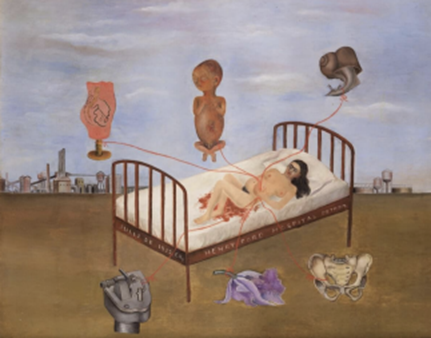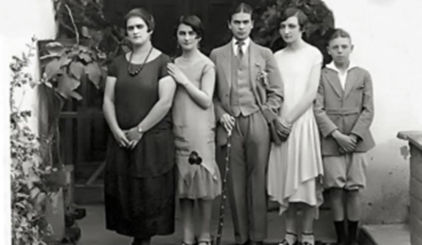Women’s History Month Profile Frida Kahlo
In honor of Women’s History Month the Dean Hope Center will be highlighting the work of women who have had success in elevating women and girls across the world. The second woman to be highlighted is Frida Kahlo.
In honor of Women’s History Month the Dean Hope Center will be highlighting the work of women who have had success in elevating women and girls across the world. The second woman to be highlighted is Frida Kahlo. Frida Kahlo is a Mexican artist best known for her powerful paintings that broke traditional notions of art and intertwined her rich Mexican heritage. Frida Kahlo was born Magdalena Carmen Frida Kahlo y Calderón in Coyoacán, Mexico City, Mexico in 1907. In her early career as an artist Frida Kahlo was heavily influenced by the political climate in Mexico, in the 1920s Mexico was in the midst of a cultural revolution rebuilding their image from colonial rule and understanding the new voice and image of Mexico independent from Europe. Mexico’s government hired artists to create murals of Mexico’s history and culture, however, women were only included as models and workers in these contracts–never as artists. This would lay the foundation for Frida Kahlo’s career as a feminist painter.
Frida Kahlo painted images that spoke to the realities of being a in her paintings
she depicted childbirth, breastfeeding, abortion, and death while also
critiquing society. In her painting, Henry Ford Hospital 1932, Frida Kahlo shares intimate visuals regarding the miscarriage of her son, her infertility due to a car accident against the cold background of an industrialized city. Frida Kahlo was trailblazing the way women were depicted in art.

In her painting, My Birth 1932, Frida Kahlo shares an image of herself leaving her mother’s womb. The artwork displayed raw motherhood, the blood, the natural female genitalia, and the covering of the mother’s face symbolizing how after birth the identity of the woman is reconciled with the new primary identity as a mother. In 1932, just twelve years after women were granted the right to vote in the United States, Frida Kahlo was bringing women’s issues to the forefront of the collective consciousness.
Frida Kahlo has also been credited with foreshadowing identity politics. Frida Kahlo frequently challenged traditional gender roles, often dressing in male clothing. She disregarded beauty norms by embracing her unibrow and mustache.

Frida Kahlo was fearlessly herself, embracing her own identity and telling her own unique story, that in turn supported the rights of women everywhere. We honor Frida Kahlo this Women’s History month and encourage women everywhere to embrace their identity, even if you feel different from your peers, there are people out there who are different just like you.
Sources
https://rosie.org.au/blog/6-reasons-frida-kahlo-feminist-icon/
Sharyn R. Udall, Frida Kahlo's Mexican Body: History, Identity, and Artistic Aspiration Woman's Art Journal, Vol. 24, No. 2 (Autumn, 2003 - Winter, 2004), pp. 10-14